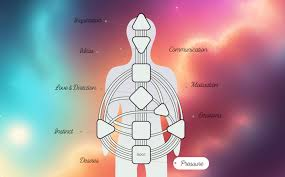Every individual perceives and engages with the universe in their unique ways. Human Design, a system blending astrology, the I Ching, Kabbalah, and chakras, provides a framework to understand this uniqueness. At its core, it highlights nine centers that shape awareness and influence decisions.
These Human Design Centers act like inner guides, which show where conditioning takes place and where natural strengths lie. Each center carries its own energy, which influences emotions, communication, intuition, and direction in life. So, learning about them offers clarity to make better and more aligned choices.
Emotional Solar Plexus
The Emotional Solar Plexus center governs feelings and emotional clarity. When defined, it creates emotional waves that affect decision-making. Instead of rushing, awareness comes through waiting for emotional neutrality before choosing.
An undefined center, however, can amplify the moods of others. A recognition of this helps individuals step back and separate borrowed emotions from authentic feelings. Awareness here prevents impulsive decisions based solely on temporary states.
This center also teaches the value of emotional intelligence, which encourages individuals to identify patterns in their highs and lows. Development of this awareness strengthens empathy, which improves relationships and communication. Over time, it fosters greater patience, which allows choices to be made with balance and inner calm.
Sacral Center
The Sacral center connects to vitality, work, and creative flow. Defined individuals often sense a gut response that signals truth or misalignment. Honoring that response builds resilience and keeps energy directed toward fulfilling activities.
For those with an undefined Sacral center, rest and boundaries become essential. Without them, burnout is more likely. Awareness here helps individuals gauge energy realistically and prevents overcommitment.
Splenic Center
The Splenic center rules instinct, intuition, and health. A defined spleen provides quick inner guidance, sometimes as subtle sensations or quiet knowing. When people listen to these signals, they can safeguard themselves and guide choices in the moment.
When undefined, this center can hold onto things or people out of fear. Awareness comes from noticing attachments that no longer serve. Thus, one can let go of things easily when one trusts that safety exists beyond familiarity.
read more : How to Prepare Your Home for Major Roofing Work
Throat Center
The Throat center represents communication and manifestation. A defined throat naturally channels consistent ways of speaking and being heard. Awareness here enhances authenticity in expression and ensures words align with intention.
Those with an undefined throat may feel pressure to speak or seek attention. Recognizing this allows for conscious pauses. Instead of forcing words, waiting for the right invitation brings clarity and impact.
This center also influences how ideas are shared with the universe, which makes time a key factor in being understood. It teaches the importance of matching tone and delivery to the situation for greater effectiveness. Strengthening awareness here helps transform communication into a tool for leadership and inspiration.
Awareness in the Ajna
- The Ajna center handles analysis, opinions, and conceptualization.
- Defined Ajna brings structured thought patterns, which create consistent frameworks for processing ideas.
- Undefined Ajna reflects mental openness, which allows multiple viewpoints without attachment.
- Awareness in this center helps distinguish between a flexible perspective and unnecessary mental pressure.
Direction from the G Center
- The G center reflects identity, love, and life direction.
- Defined G provides a stable sense of purpose and clear personal values.
- Undefined G often seeks external validation or direction through others.
- Awareness here allows individuals to embrace change without feeling lost.
Human Design Centers thus act as maps of awareness that shape everyday experiences. Each one offers insights into patterns, strengths, and potential conditioning. Recognizing these centers allows for choices that feel authentic and lead to greater alignment.

